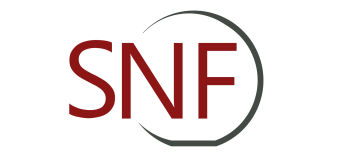|
Stepper |
ASML PAS 5500/60 i-line Stepper
asml |
ASML PAS 5500/60 i-line stepper, automatic for 25 inch wafers, 450nm resolution, 365nm near-UV light
|
All |
SNF Cleanroom Paul G Allen L107 |
|
Resist Spray Coat (manual) |
EVG 101 Spray Coater
evgspraycoat |
|
All |
SNF Cleanroom Paul G Allen L107 |
|
Contact Aligner |
EVG Contact Aligner
evalign |
1:1 Contact Mask Aligner, 1.5 um resolution, single wafer, manual system
|
All |
SNF Cleanroom Paul G Allen L107 |
|
Resist Develop (manual) |
Ex Fab Develop Wet Bench
wbexfab_dev |
Manual developing of photoresist using mainly MF-26A.
|
Flexible |
SNF Exfab Paul G Allen 104 Stinson |
|
Resist Coat (manual) |
Headway 3 Manual Resist Spinner
headway3 |
|
All |
SNF Exfab Paul G Allen 104 Stinson |
|
Resist Coat (manual) |
Headway Manual Resist Spinner
headway2 |
|
All |
SNF Cleanroom Paul G Allen L107 |
|
Direct Write |
Heidelberg MLA 150
heidelberg |
Maskless writer that patterns without prior fabrication of masks.
|
All |
SNF Exfab Paul G Allen 104 Stinson |
|
Direct Write |
Heidelberg MLA 150 - 2
heidelberg2 |
Maskless writer that patterns without prior fabrication of masks.
|
All |
SNF Cleanroom Paul G Allen L107 |
|
Wafer Prime (HMDS), Singe |
HMDS Vapor Prime Oven, YES
yes |
YES oven: Wafer singe at 150ºC and HMDS prime.
|
All |
SNF Cleanroom Paul G Allen L107 |
|
Wafer Prime (HMDS) |
HMDS Vapor Prime Oven, YES2
yes2 |
YES2 oven: HMDS prime at 150ºC
|
All |
SNF Exfab Paul G Allen 104 Stinson |
|
Contact Aligner |
Karl Suss MA-6 Contact Aligner
karlsuss |
Karl Suss MA-6 Mask Aligner is a 1:1 Contact Aligner, 1.5 um resolution, single wafer, manual system (Backside align, including IR).
|
All |
SNF Cleanroom Paul G Allen L107 |
|
Contact Aligner |
Karl Suss MA-6 Contact Aligner
karlsuss2 |
Karl Suss MA-6 Mask Aligner is a 1:1 Contact Aligner, 1.5 um resolution, single wafer, manual system (Backside align, including IR).
|
All |
SNF Cleanroom Paul G Allen L107 |
|
Resist Coat (manual) |
Laurell Manual Resist Spinner
laurell-R |
|
All |
SNF Cleanroom Paul G Allen L107 |
|
Mask Cleaning (manual) |
Mask Scrubber
masksrub |
Manual mask cleaner for one 5 inch mask, water under pressure.
|
All |
SNF Cleanroom Paul G Allen L107 |
|
Oven Bake |
Oven (White)
white-oven |
|
Flexible |
SNF Cleanroom Paul G Allen L107 |
|
Resist Post Bake |
Oven 110°C post-bake
oven110 |
The 110°C Oven bakes the wafers with resist at 110ºC after the development, called post-bake.
|
All |
SNF Cleanroom Paul G Allen L107 |
|
Resist Prebake |
Oven 90°C prebake
oven90 |
The 90°C Oven is the 90°C prebake oven. It is used to bake wafers after resist coating.
|
All |
SNF Cleanroom Paul G Allen L107 |
|
Oven Bake |
Oven BlueM 200°C to 430°C
bluem |
The BlueM oven is for 200°C to 437°C temperature bakes, i.e. polyimide.
|
Flexible |
SNF Cleanroom Paul G Allen L107 |
|
Resist Develop (automatic) |
SVG Develop Track 1
svgdev |
Automatic resist development of 4" wafers in cassette holding up to 25 wafers.
|
All |
SNF Cleanroom Paul G Allen L107 |
|
Resist Develop (automatic) |
SVG Develop Track 2
svgdev2 |
Automatic resist development of 4" wafers in cassette holding up to 25 wafers.
|
All |
SNF Cleanroom Paul G Allen L107 |


